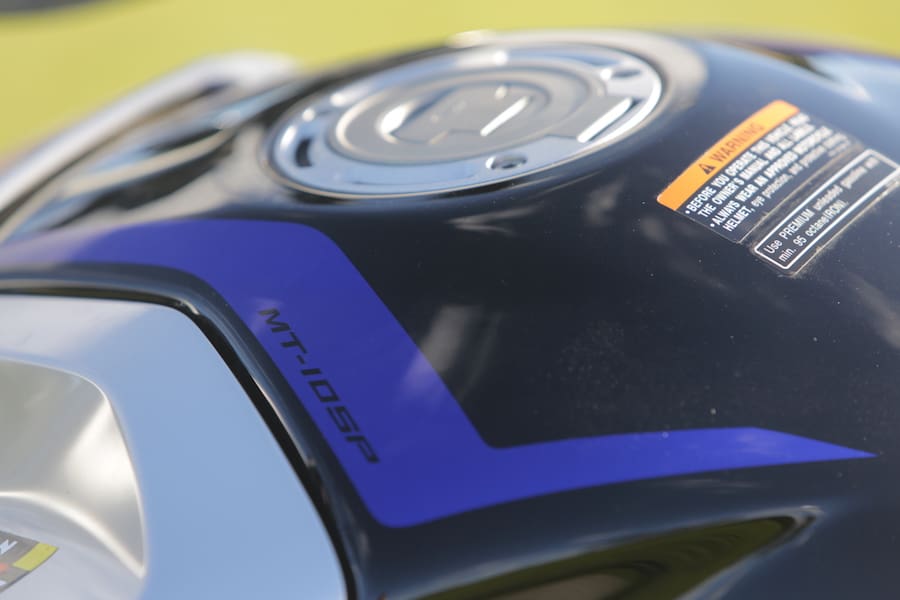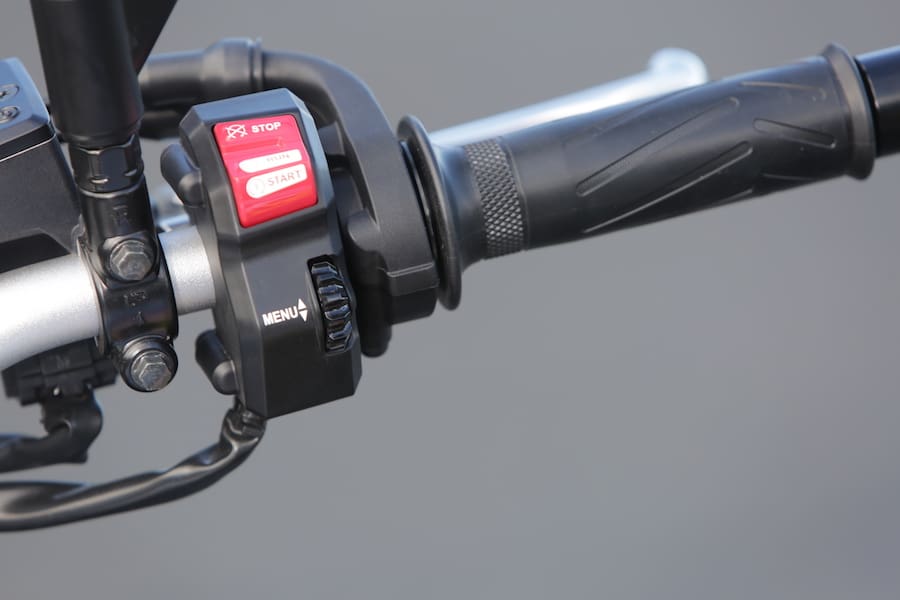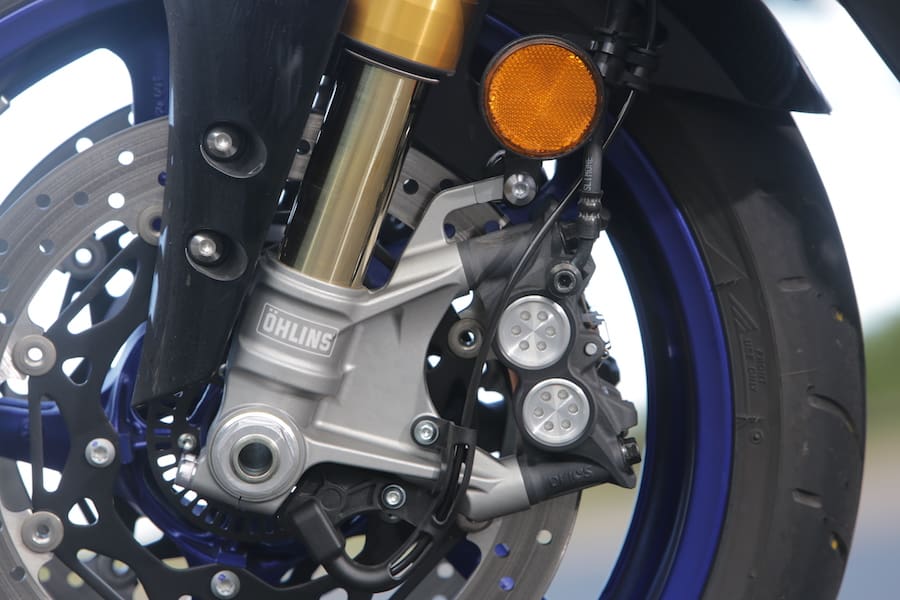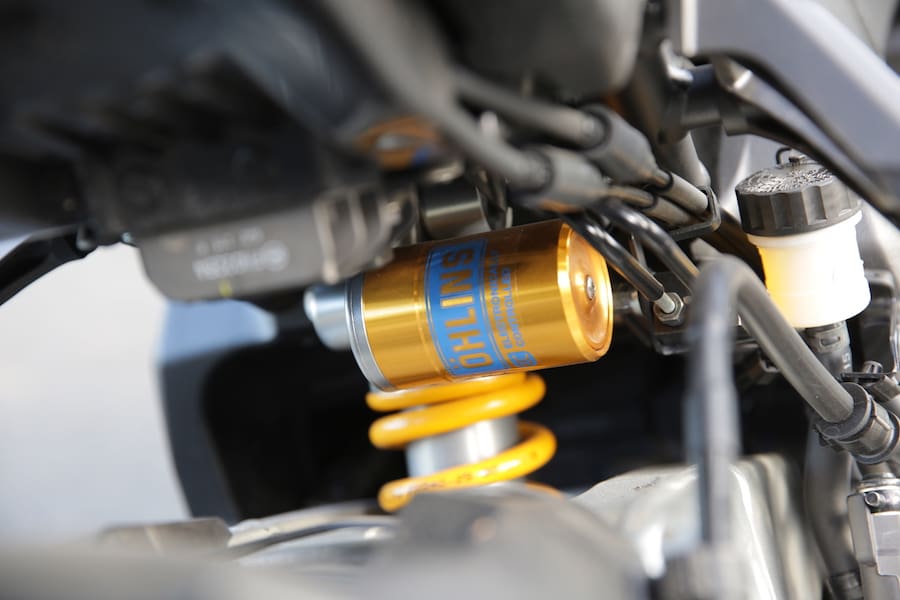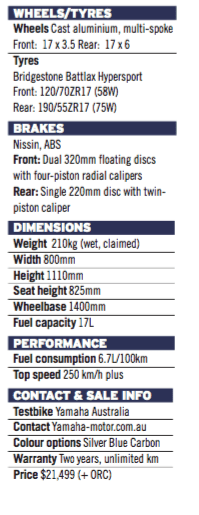Yamaha’s grunt-packed MT-10 supernaked was one of the revelations of 2016. It burst onto the scene with a reworked version of the 998cc in-line four engine from the 2015 YZF-R1 and a mega bang-for-buck price tag of $17,999 (+ ORC), which saw it quickly attract a loyal fan base.
With its YZF-R1 superbike sibling available in base and M variants, an up-spec MT-10 was always on the cards, and the MT-10 SP was duly revealed at Intermot last October. Now it’s available in Australia for $21,499 (+ ORC). Yes, you will need to raid your money box for an additional $3500 above the standard model, but as we discovered over a glorious month of riding, the extra bling makes the SP an almost irresistible step up.
Before we get too far into the story of Yamaha’s new MT-10 SP, it’s worth quickly revisiting the standard MT-10. The big daddy of Yamaha’s hugely popular MT range hit Australian shores last July (AMCN Vol 66 No 04), and forums and Facebook pages quickly filled with love or hate comments about the cyborg styling. But one thing almost everyone who tried the bike agreed on was its ability to deliver pure riding pleasure at a price that didn’t wipe the smile off your face. On the downside, many also noted that the fuelling needed work, with the selection of three riding modes – A, B and Standard – doing little to smooth out a snatchy throttle.
There’s was little doubt that an SP version would quickly join the standard model, the question was what extra goodies would be offered. Fitment of a quickshifter (up only) and changes to the fuelling were expected, as was the de rigueur Öhlins suspension. Yamaha indeed added these items, but rather than fully adjustable manual Öhlins kit, it went straight to the top draw, fitting a tasty electronic active fork (USD NIX 30) and a rear Öhlins TTX 36 EC monoshock, the same kit as found on the top-of-the-range YZF-R1M. Also added was a striking TFT dash and an electronics interface which lets you adjust suspension, power delivery and traction control at the press of a button. There’s even a Race option for the dash layout, with a lap timer for the almost inevitable trackdays that will allow you to fully tap the bike’s claimed 118kW and 111Nm. Topping off the SP is an R1-inspired blue and silver livery and special SP motifs on the wheels.
There’s no denying the Öhlins active suspension is the big selling point of the SP. Not that there is anything dreadful about the fully adjustable KYB 43mm fork and rear shock on the standard MT-10, especially when you look at the bike’s price tag. It’s more than adequate for weekend scratching, but it’s shortcomings are revealed when really pushed. It can also be a little harsh for daily commuting duties, and if you are not skilled in the black art of suspension-knob twiddling then the adjustments are going to be pretty useless.
The active Öhlins kit on the SP addresses both issues in an easy-to-use manner via menus on the new full-colour TFT dash – just scroll through and select using buttons and a wheel located on the switchblocks. The menu scroll and traction control adjustment buttons on the left will be familiar to MT-10 owners, but the small menu scroll and select wheel on the right is new.
The electronic suspension has two active settings: A1 (sport) and A2 (touring). While the difference between the two settings was a little hard to pick, the difference between the manual KYB kit on the MT-10 and the electronic SP gear is as obvious as the nose on your face. Riding our MT-10 long-termer and the SP test models back to back was a great demonstration of how active suspension works; the on-board Suspension Control Unit (SCU) constantly analyses the data and applies the optimal compression and damping settings via electronically controlled bleed valves. Where the standard MT-10 struggled on a stretch of bumpy, twisting mountain road, the SP has the ability to smooth out the ride.
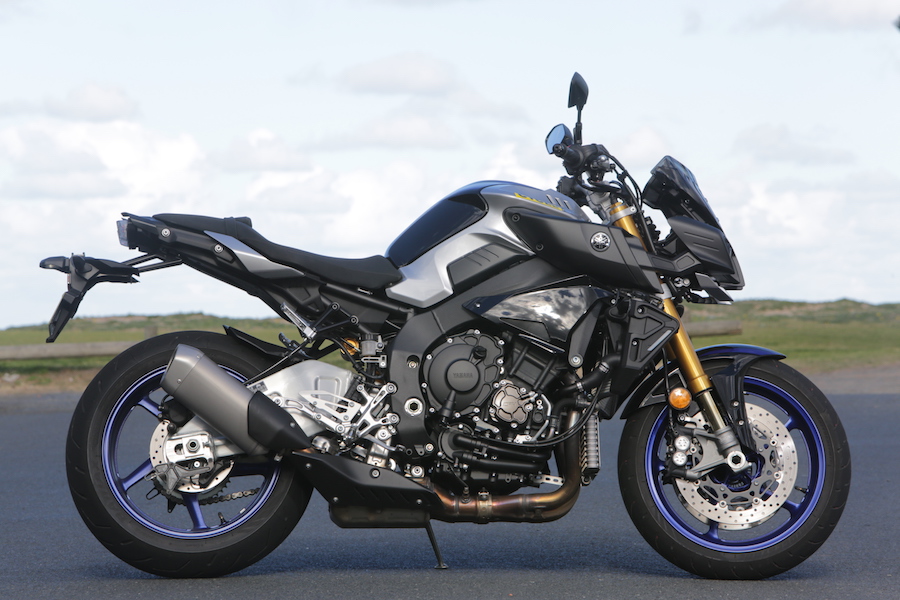
Our panel of test riders (see second ops breakout) all agreed that much less effort was required to make the SP hold its line though corners and remain pointed in the right direction. Under heavy braking, the suspension instantly reacts to the increased front-end load, reducing fork dive and controlling the rebound. Less bumps also meant less accidental throttle inputs which can make the standard MT-10 a little wild when ridden hard – its power delivery likened to a light switch.
At times it was hard to believe the two bikes share the same steering geometry. Where the SP will hold its line as you feed on the power coming out of a bend, the standard bike will want to push wide as the initial compression of the fork under braking transfers to rear-end squat.
“But I know more than those electricary fairies and want to set my own suspension settings,” I can already hear some of you saying. No problem, that’s where the dial-your-own M1, M2 and M3 modes come in handy. The M manual suspension mode disengages the active system and allows you to dial your own compression and rebound (see breakout). The settings can be saved, and then recalled on the fly regardless of what riding mode has been selected – simply shut the throttle then pick’n’flick.
Even the A1 and A2 active suspension settings provide a five per cent plus and minus range of adjustability. All credit to Yamaha for designing an interface system that’s easy to learn, understand and use. No instruction booklet or delivery tutorial required – an enjoyable hour of fiddling with the system was all I needed to master the controls.
Having Öhlins active electronic suspension fitted to a $21,499 Yamaha shows it will soon be the norm rather than the exception, and it’s the same with full-colour TFT screens. In one move, Yamaha has made the grey and black LCD screen on the standard model look dowdy. While you could argue (though you would want to be very persuasive) that upgrading to the SP version for the Öhlins kit alone isn’t worth the extra investment, the TFT dash makes it almost too good to resist. In addition to the super-bright colour display, there’s a choice of Street and Track layouts (see breakout) as well as a bunch of sub-menus, where all manner of displays and settings can be adjusted.
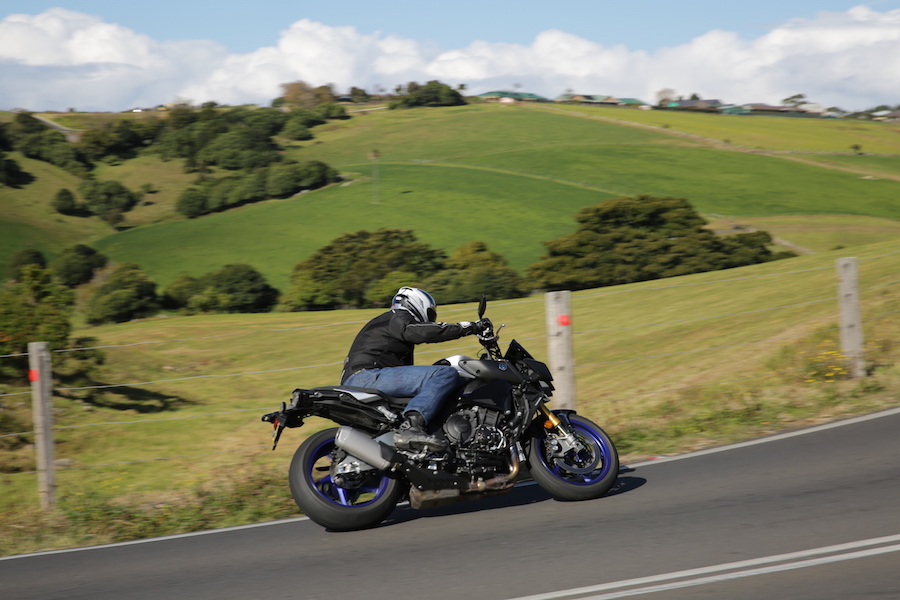
The SP also provides a greater selection of riding modes – four in total. It offers the ability to adjust three levels of power delivery and three levels of traction control (as well as off), plus the choice of two active suspension settings (A) and three manual suspension settings (M).
Switching the power delivery modes between levels 1, 2 and 3 alters the throttle response, not the amount of power and torque delivered. Level 1 is the sharpest, while level 3 is designed mainly for wet weather running and inner-city traffic slaloms. The traction control also runs in the same order, with level 1 the least intrusive and level 3 for slippery conditions. And because I know you will ask, yes, level 1 will still allow a decent wheelie. Even level 2 will allow some lift of the front wheel.
All of your fiddling is saved to memory, but can be changed back to the factory settings with the press of a button. One issue I discovered with all the additional wizzbangery on the SP model is the bulkier switchblocks. The left-hand unit in particular hindered access to the indicator switch.
Also on the upgrades list is an up-only quickshifter. Before taking delivery of the SP model, we ordered a genuine accessory Shift Assist unit from Y-Shop and had it fitted to our standard MT-10 long-termer by the team at RB Racing in Caringbah, NSW. It’s the same unit as fitted to the SP, and while both have worked faultlessly, it’s not as smooth as other quickshift units fitted to some competing supernaked machines. Then again, the Shift Assist alone costs $438.22, not including installation, so when you look at the package you receive when upgrading from the MT-10 to the MT-SP for $3500, it all makes sense. Interestingly, you can disengage the quickshifter with just a couple of switch flicks, but I’m buggered if I can think of any reason why you would want to do so.
While the suspension, TFT dash and quickshifter are the tangible upgrades, there’s also the feel. Even the biggest fan of the MT-10 would be hard pressed to describe the initial power delivery from the CP4 engine as anything but abrupt. Our regular dyno guru Dave Edgecombe from Dynobike in Moorabbin has developed an ECU flash for the standard MT-10 which he loaded into our long-termer with great results. Yamaha has also fiddled with the fuelling software for the SP. Power delivery is now much softer at the initial twist of the throttle in power modes 1 and 2, and it is decidedly docile in mode 3.
Stepping straight off our hotted-up MT-10 and onto the SP I found the initial throttle response was slightly flat, followed by a surge. Some may prefer this over the standard MT-10, and it did grow on me after a while, but I’ll always have a soft spot for the edgy, grunty nature of the standard model. Thankfully, one thing the SP still has in spades is the fun factor. This bike loves to bring out your inner hoon, and I’m sure the design brief contained the instruction: “must still be able do awesome wheelies”.
I have just two criticisms of the SP. The first is that the power and torque output is identical to the standard model. Our long-term MT-10 project is proof that there are plenty of additional neddies lurking inside the four-pot engine just waiting to be unleashed, and it would have been a great selling point for the SP. The second is that the ABS can not be deactivated. We know this is a safety feature beyond Yamaha’s control, and that modern-day ABS has reached a standard that makes it useable for most riders at trackdays, but having a racetrack program within the dash functions, including a lap timer, but not being able to deactivate the ABS is a little contradictory.
Yamaha’s original MT-10 was a revelation when released last year. It proved that real sportsbike performance and handling could be delivered in a quality supernaked package at a bargain price. The MT-10 SP delivers everything we loved about the original MT-10 and provides the extras the base model was crying out for, and none that it wasn’t. More impressive is that Yamaha has managed to do this while retaining an attractive price.
Yamaha’s MT range continues to expand, delivering its hoot-a-minute torque-filled riding experience to an ever increasing number of riders. So what’s next on the MT agenda? – a fully-loaded MT-10 M? Now that would be nutty.
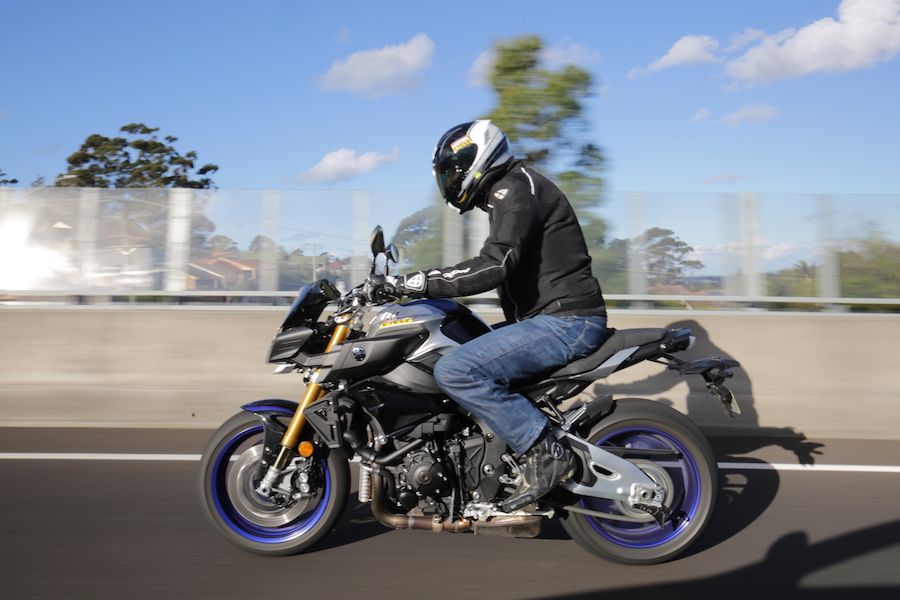
The Breakdown
1. Engine
Power is delivered by the same spec 998cc four-cylinder powerplant as the standard MT-10, producing a claimed 118kW and 111Nm. Although based on the 2015 YZF-R1 engine, the CP4 has a new cylinder design, new airbox, a heavier crank, and works in tandem with a 43-tooth rear sprocket. The result is an engine designed for the road and mountain-pass scratching, delivering glorious mid-range torque. Its crossplane power delivery characteristic sets it apart from its competitors.
2. Riding modes
The MT-10 SP has four riding modes: A, B, C and D. The three levels of power output (1 being the highest and 3 the lowest), three levels of traction control (and off) and five suspension settings – two active (A) and three manual (M) – can all be customised within each riding mode. All settings, with the exception of switching the TC on and off, can be changed on the fly as long as the throttle is closed, and all changes are stored in the memory and are retained after ignition off and on.
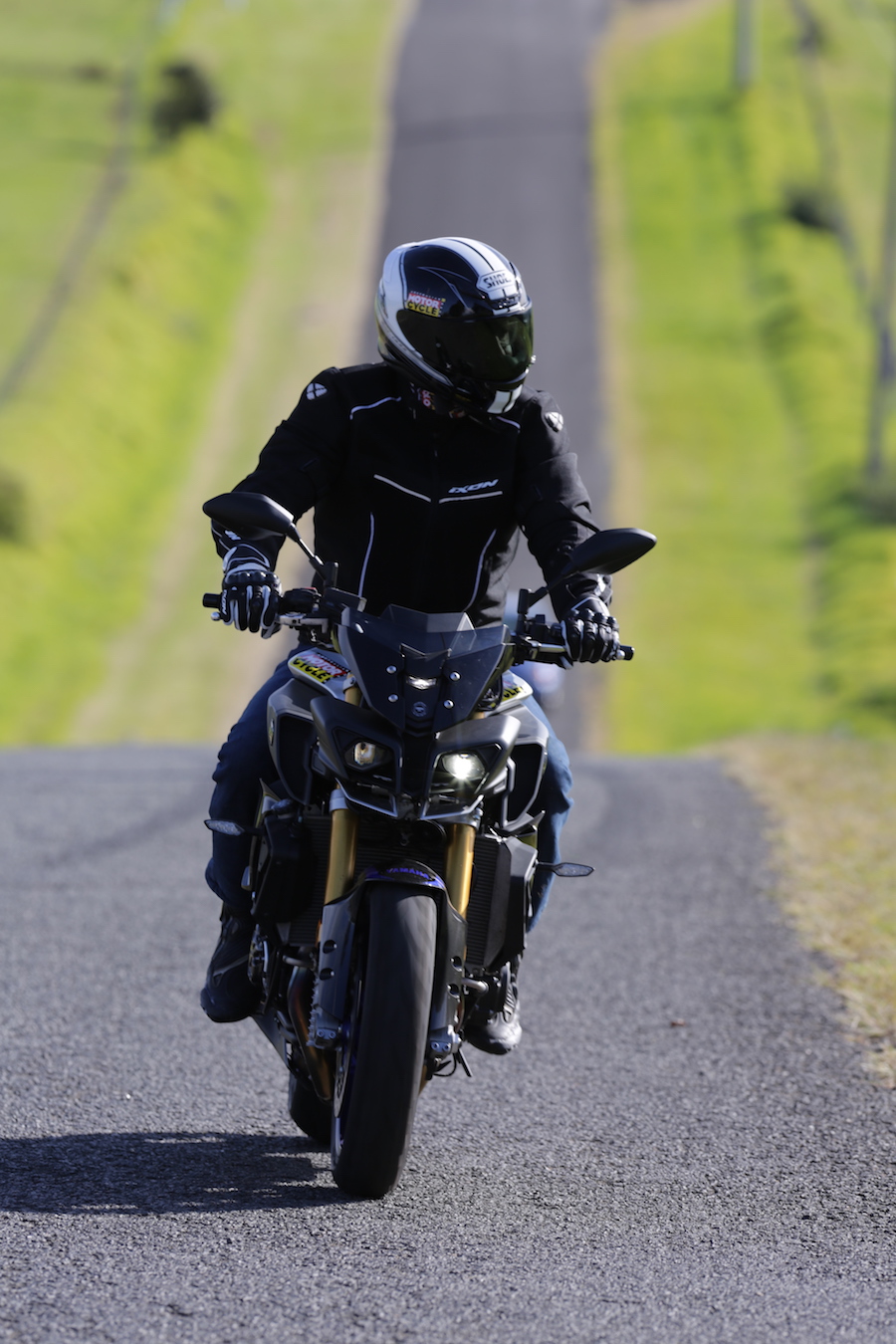
3. Adjusting compression and rebound
A 43mm USD NIX 30 fork offers 120mm of travel up front and a TTX 36 EC shock has 120mm at the year. The system provides a choice of two active settings (A1 for a sporty feel, and A2 for touring) and three manual modes (M1, M2 and M3). In Manual mode you can set the compression and rebound in the fork legs and rear shock with a scroll of a thumb wheel. Any adjustments to the three M modes are automatically saved to memory. One big advantage of this system is you can try different settings without fear of making a total meal of the bike’s handling. With the flick of a button you can return all three manual suspension settings back to factory settings.
4. TFT Dash
In Street mode the info-packed TFT displays a wide range of information including engine speed – which changes from black, to green and then red – trip meters, odometer, gear selection, fuel consumption and temperature information. There’s a lot going on, but everything is easy to read.
When changed to Race mode the engine speed takes centrestage, and there’s even a lap timer that will log your times, so when you’re telling your mates how fast you are you’ve got proof. They can also be, erm, quickly deleted.

Competition
As last year’s AMCN big-bore supernaked shootout (Vol 66 No 09) revealed, there’s no shortage of muscle fighting for the hearts and wallets of buyers, and it’s the Europeans who are throwing down the technology gauntlet to the Japanese.

Head to Head
Yamaha MT-10 SP
$21,499 (+ ORC)
Öhlins electronic active suspension including USD NIX 30 fork and rear TTX 36 EC monoshock
Full colour TFT dash
Quickshifter (up only)
Additional engine modes
R1-inspired paint scheme
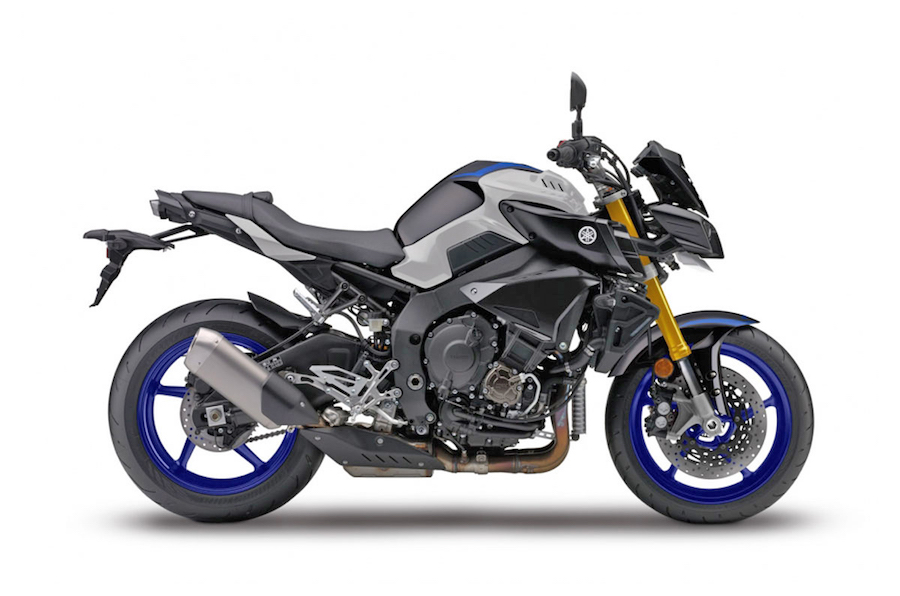
Yamaha MT-10 $17,999 (+ ORC)
Plus Yamaha Y-shop accessories
Full titanium Akrapovič exhaust system $2703.18
Shift Assist (up only) $438.22
Rearsets $1333.80
Mustard Bike fender eliminator $125
Dyno tune by Dave at Dynobike $795
Oggy Knobbs (available from Kenma kenma.com.au) $289
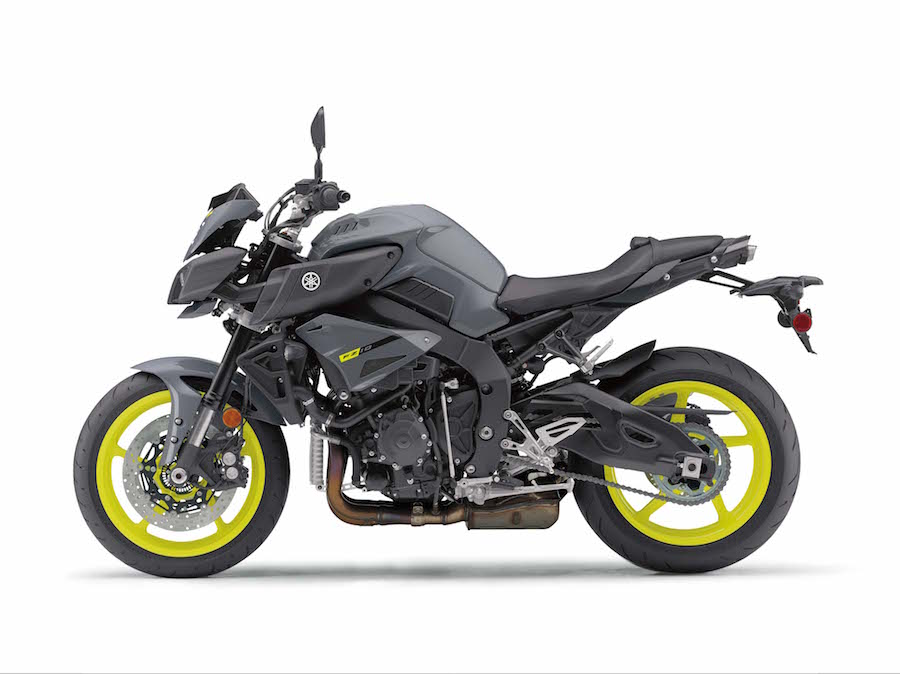
By Chris Dobie
